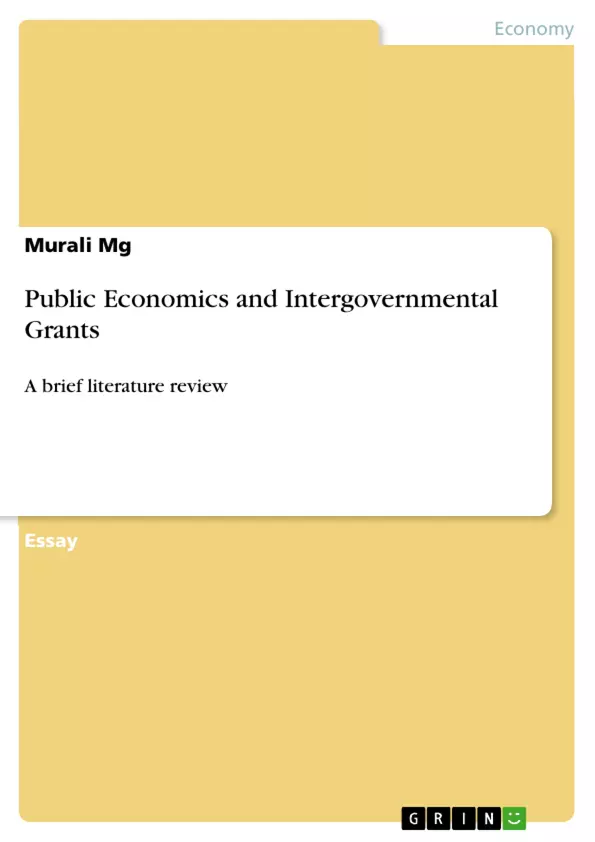This text gives an insight into public economy. It explains intergovernmental grants, their objectives, history and impact on economy.
According to Musgrave (1939), the public economy is comprised of three functions; stabilization, distribution and allocation. Accordingly, the government should be able to stabilize prices, avoiding excessive inflation and has to ensure full employment. Secondly, the government should see that the resources are allocated efficiently and finally the governments should also ensure socially accepted wealth levels and market access are maintained, if not maintained the wealth has to be redistributed. Apparently by doing this governments can and have to stabilize employment levels, prices, and economic growth.
Table of Contents
- Public Economics
- Intergovernmental Grants
- Objectives of Intergovernmental grants
- History of Intergovernmental Grants
Objectives and Key Themes
This text explores the role of intergovernmental grants in public economics, focusing on their objectives, history, and impact on subnational governments. It examines the different types of grants, their conditions, and their effectiveness in achieving various policy goals.
- The objectives of intergovernmental grants
- The history of intergovernmental grants in the United States
- The different types of intergovernmental grants
- The impact of intergovernmental grants on subnational governments
- The role of intergovernmental grants in fiscal federalism
Chapter Summaries
The first chapter introduces the concept of public economics and its key functions, including stabilization, distribution, and allocation. It highlights the importance of government policies in influencing economic activity and maximizing welfare.
The second chapter delves into the concept of intergovernmental grants, defining them as direct budgetary outlays from federal to subnational governments. It emphasizes their significance as a revenue source for subnational governments and their role in strengthening public sectors and improving service delivery.
The third chapter outlines the objectives of intergovernmental grants, identifying three key goals: financing sub-national services and investments, subsidizing services to improve efficiency, and equalizing resources to address tax capacity disparities.
The fourth chapter discusses the different types of intergovernmental grants, including categorical, block, and shared revenues. It explores the varying degrees of conditionality associated with each type and their impact on the power dynamics between federal and state governments.
The fifth chapter examines the history of intergovernmental grants in the United States, tracing their origins back to the 18th century and highlighting their evolution over time. It explores the role of federal grants in supporting state and local government development and the emergence of "strings attached" grant programs.
Keywords
Public economics, intergovernmental grants, fiscal federalism, subnational governments, categorical grants, block grants, shared revenues, federal aid, state and local government, revenue sources, service delivery, policy goals, tax capacity, fiscal gap, economic development, history of grants.
- Quote paper
- Murali Mg (Author), 2016, Public Economics and Intergovernmental Grants, Munich, GRIN Verlag, https://www.grin.com/document/342182



